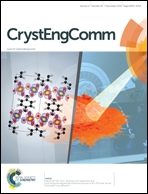Hierarchical ZnO hollow microspheres with exposed (001) facets as promising catalysts for the thermal decomposition of ammonium perchlorate†
Abstract
Hierarchical porous ZnO hollow microspheres assembled from nanorods with exposed (001) facets on their external surface were prepared in one pot by a simple low-temperature wet chemical method without templates. The formation mechanism based on their chemical self-transformation was proposed. Importantly, these ZnO hollow microspheres exhibited better catalytic activity for the thermal decomposition of ammonium perchlorate (AP) than the dispersed ZnO nanorods by lowering its decomposition temperature from 409 °C to 308 °C and decreasing its activation energy from 150 ± 14 kJ mol−1 to 63 ± 7 kJ mol−1. This is attributed to their hierarchical porous structure with larger surface area and exposed (001) facets dominant on their external surface, which can facilitate the adsorption of HClO4 and NH3 gases from AP and the formation of active oxygen. The active oxygen will promote the oxidation reaction of NH3 more completely in AP decomposition, thus leading to a significant decrease in decomposition temperature and activation energy. Therefore, this work could provide a new insight into the thermal decomposition mechanism of AP catalyzed by hierarchical micro/nanostructures of metal oxides.


 Please wait while we load your content...
Please wait while we load your content...